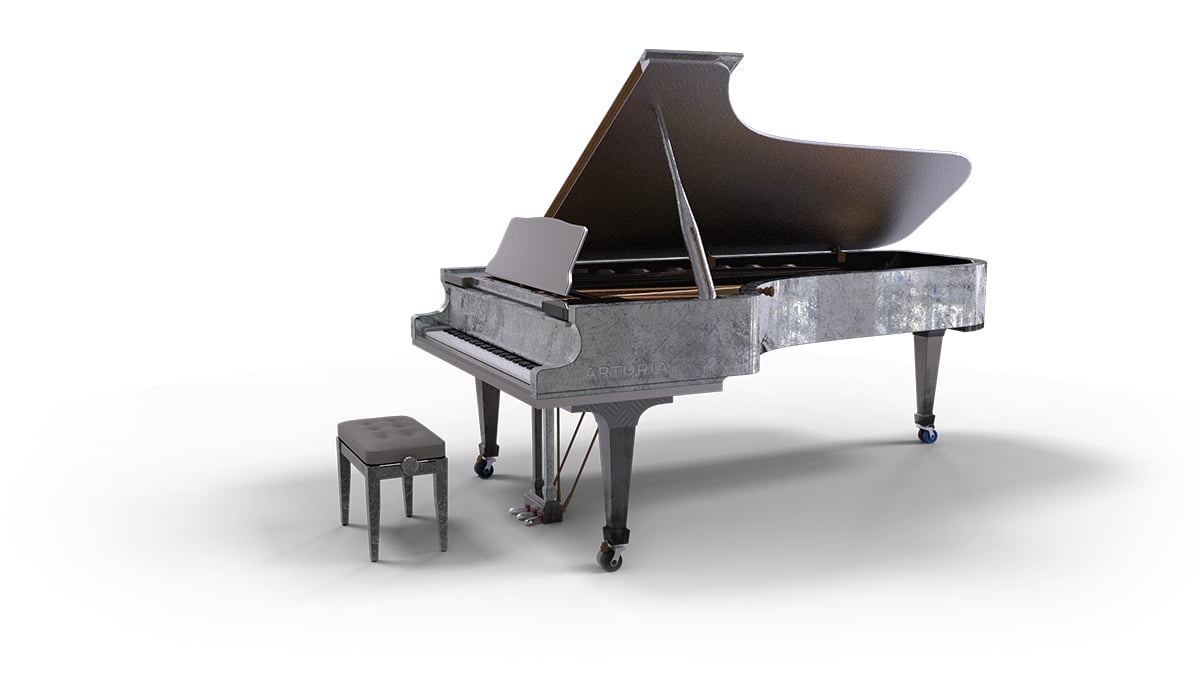

To test the impact of these changes (and others that there’s no space to describe) I loaded Jup‑8 V3 and V4 simultaneously with the intention of creating identical patches on each and performing a few A/B tests. Once programmed, the dispersions are constant because the developers found that adding further random variations to the amounts didn’t emulate the original behaviour, but they’ve told me that this is something that they are looking to model in the future. The first three buttons allow you to select three factory preset degrees of variation, or you can program your own dispersion model and select this using the Custom button.

There are six dispersion parameters - oscillator pitch and pulse width, filter cutoff and resonance, contour time and modulation depth - and these allow you to determine the amounts by which each voice can differ from the others in each of these ways. In addition to the free‑running oscillator algorithm (which is invoked when the oscillators are independent and when they are sync’ed but, for mathematical reasons, not when cross‑mod is used) V4 also includes a new Voices Dispersion panel with four associated buttons. While the main row of synthesis controls remains largely unchanged, much else is so different that, not long after I started testing it, I decided that V4 is a different synthesizer rather than an update.

Turning first to the new version of Jup‑8 (shown above), the differences between V3 and V4 proved to be far more significant than I had expected. Even at that stage it was clear that this was going to be a big step forward, so I was delighted when I heard that it was going to make its debut in V Collection 8 as part of an improved Jup‑8 V4 and the new Jun‑6 V. Shortly after I reviewed Arturia’s OB‑Xa V (in SOS August 2020 issue) I received an email from the company’s engineers that described their new, ‘free‑running’ oscillator technology, as well as links to two prototypes that incorporated various implementations of this. This meant that you obtained a collection of different, but tonally static notes when you played chords, no matter how long you held them. Secondly, there was no drift once the offset was applied. Indeed, if the oscillators’ phases happened to be 180 degrees apart, any given note could sound an octave higher than played. Firstly, if the oscillators were tuned to the same pitch, each note’s tone could be significantly different from the previous and the next. If the synth in question used two oscillators per voice, the problems with this method were twofold. Introduced in the noughties, this was the company’s method of emulating the drift of analogue oscillators by applying a random offset to their initial phases when you played each note.

ARTURIA PIANO PLUS
Today, V8 adds four new instruments as well as two upgraded ones, plus a new version of Analog Lab, new sound libraries and further enhancements including macros, improved housekeeping and integrated tutorials.īefore looking at the instruments themselves, I would like to discuss something that, in my opinion, Arturia never got right in the past. In recent years, Arturia’s V Collection has grown into a substantial resource, with emulations of numerous monosynths, polysynths, samplers, pianos, organs and other keyboards, the original of any one of which (with the possible exception of the CZ1) would cost more than the whole collection. V Collection 8 introduces new instruments and completely reworks some old favourites.


 0 kommentar(er)
0 kommentar(er)
